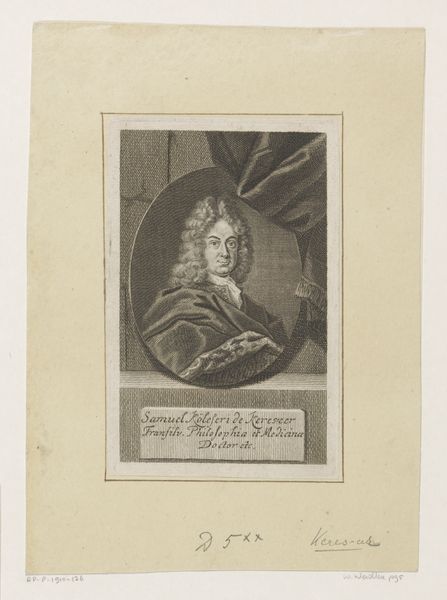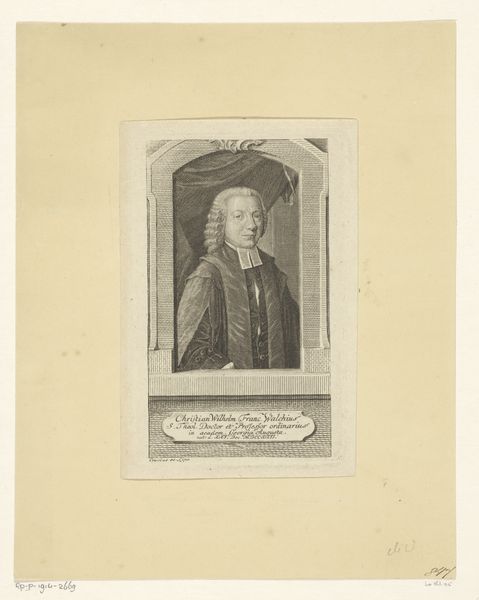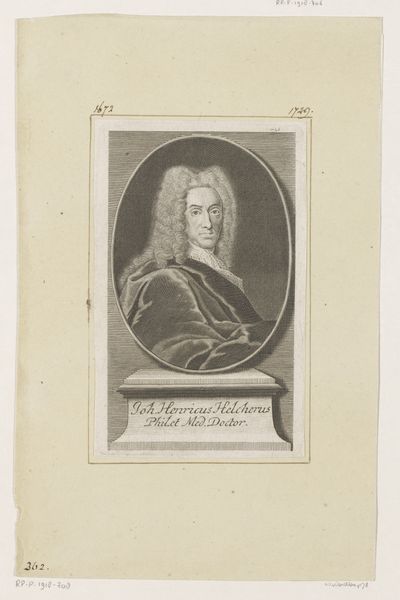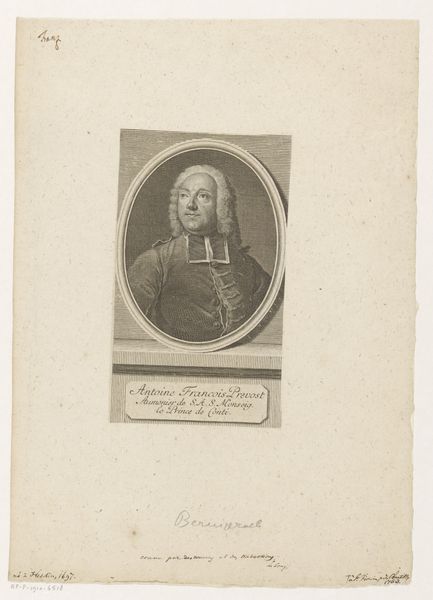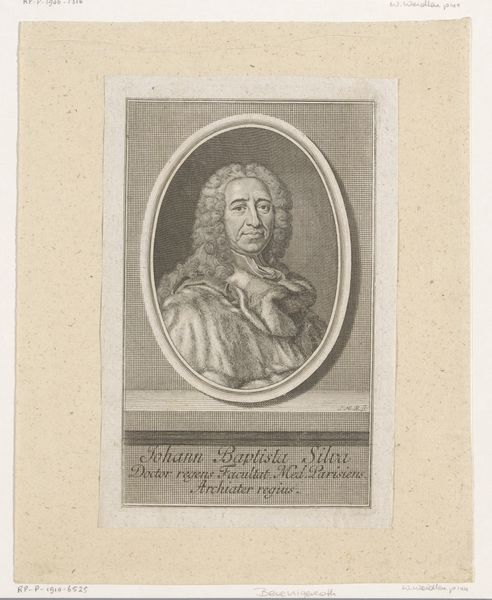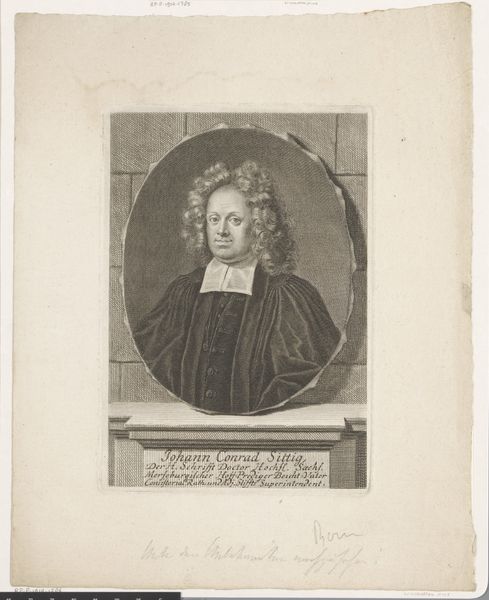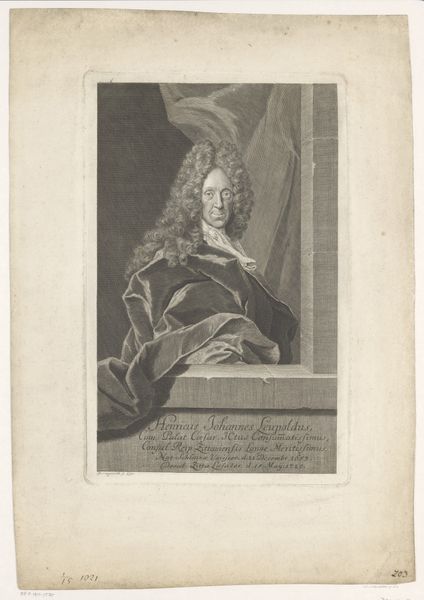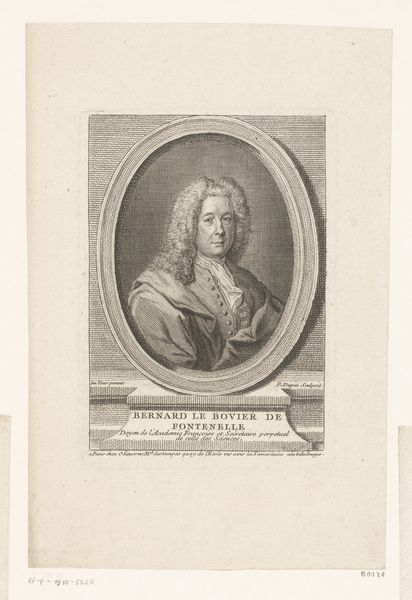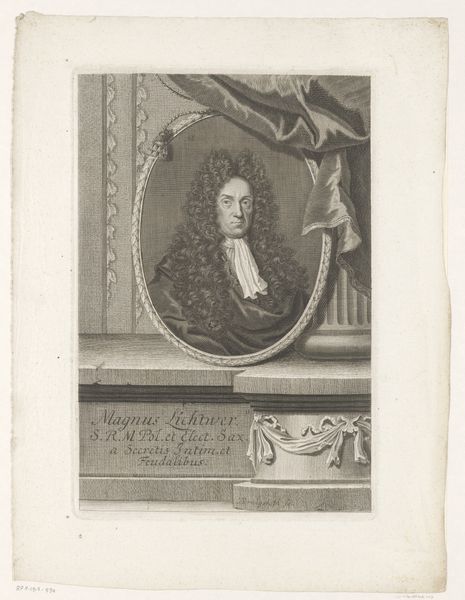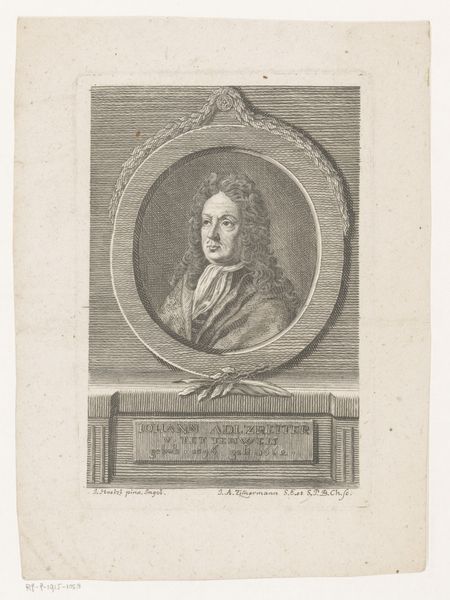
Dimensions: height 158 mm, width 97 mm
Copyright: Rijks Museum: Open Domain
This is a portrait of Henry Cope, made by Georg Christoph Schmidt in the 18th century using engraving techniques. Engraving is a meticulous process, where the artist uses a tool called a burin to carve lines into a metal plate. This plate is then inked, and the ink-filled grooves transfer the image onto paper when pressed. The clarity and precision of engraving allowed for detailed reproduction, but required a deep understanding of materials, and a high degree of skill and physical control. Schmidt would have carefully considered the depth and spacing of each line to create subtle variations in tone and texture. Looking at the artwork, you can see the fine lines that define Cope's face, wig, and clothing, bringing the texture to life. As a reproducible medium, engravings like this one played an important role in circulating images and ideas at a time when photography didn't exist. The skilled labor involved in engraving elevates this print beyond mere reproduction, positioning it as a work that blends technical expertise, artistry, and social significance.
Comments
No comments
Be the first to comment and join the conversation on the ultimate creative platform.

